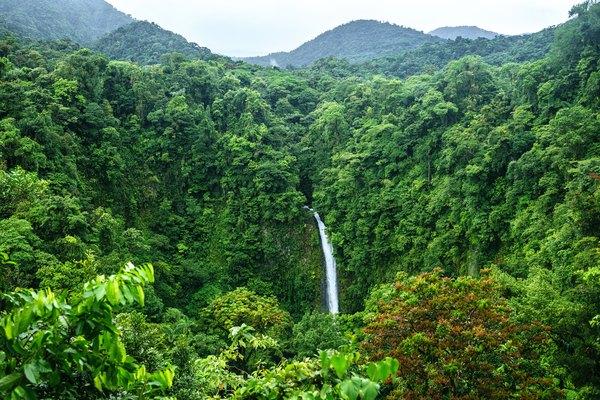Taking advantage of the fact that today is the International Tropics Forest Day, I consider it important to highlight the initiatives that have played a fundamental role in the reforestation of the world’s forests.
Every year, 10 million hectares of forests are lost worldwide, an alarming reality that must be stopped urgently. However, when we come across the encouraging achievements of countries that have promoted reforestation, hope is reborn, and we realize that we can still bring about positive change.
The Great Green Wall of Africa:
The Great Green Wall is an ambitious project that spans several countries on the African continent, from Senegal to Djibouti. The main objective is to stop desertification and restore forest cover in areas affected by land degradation. Through tree planting, the aim is to create a green barrier that protects local communities and promotes biodiversity.
Tree Planting Program in Ethiopia:
In Ethiopia, deforestation has been a significant problem for decades. However, the country has implemented a large-scale tree planting program with the aim of combating land degradation and desertification. In 2019, the country set a world record by planting more than 350 million trees in a single day as part of the Green Legacy initiative. This campaign continues to inspire other nations to take similar actions.
Tree Planting Initiatives in India:
In India, several successful tree planting initiatives have been developed to address deforestation and land degradation. The “Sankalp Taru” project has focused on mass tree planting and biodiversity conservation across the country. In addition, the state of Uttar Pradesh set a world record in 2016 by planting more than 50 million trees in a single day.
Forest Restoration Project in China:
China has undertaken a large-scale forest restoration project known as the “Great Green Wall China.” This project aims to reverse desertification and reduce soil erosion by planting trees and restoring forest ecosystems in affected areas. To date, significant forest recovery has been achieved and soil quality has been improved in millions of hectares.
In Latin America, we can find inspiring success stories in the conservation of tropical forests and the fight against deforestation. Some significant examples are as follows:
Brazil:
Brazil has implemented a large-scale reforestation program in the Amazon region. Through government policies and actions, protected areas have been established and forest restoration has been promoted. In addition, non-governmental organizations and local communities also play a crucial role in reforesting deforested areas, contributing to biodiversity conservation and habitat protection of endangered species.
Costa Rica:
Costa Rica has achieved a significant milestone by becoming the first tropical country to halt deforestation and, in addition, has increased forest cover in its national territory, as reported by CNN in 2020. According to data from the 2015 Forest Census, forest cover represented 54% of the national territory. By 2021, a remarkable increase has been observed, reaching almost 60% of the territory covered by forests once again.
Mexico:
In Mexico, significant progress has been reported in the fight against deforestation. According to official data, the rate of deforestation decreased markedly in recent years. In 2019, a deforestation rate of 226,581 hectares was recorded, which was reduced to 174,190 hectares in 2020 and to 167,811 hectares in 2021. These reductions represent a percentage decrease of 23.12% and 25.94%, respectively.
Guatemala:
Reforestation efforts have been ongoing in Guatemala and the goal is to reach zero deforestation. In 2016 the percentage of deforestation was 1.1%, currently it is -0.3%, which means an improvement of 127%.
These are just some examples of successful cases of reforestation worldwide, which shows us that, with joint efforts between governments, local communities, organizations, and citizens, it is possible to face the challenges of deforestation and promote forest conservation.
AgroAmerica’s support for forest conservation:
AgroAmerica has played a crucial role in the conservation of tropical forests, demonstrating a firm commitment to environmental protection. Through the implementation of programs and the formation of strategic alliances, we have actively promoted reforestation and forest preservation. The following are some of the initiatives we have undertaken:
Mangrove reforestation:
In one year, we managed to reforest more than 85 hectares of mangroves, an amount significantly greater than the total amount of reforestation carried out in all of Guatemala in the last 10 years. This effort has contributed to the restoration and conservation of an ecosystem crucial to coastal biodiversity.
Forest and riparian zone conservation:
We have conserved more than 900 hectares of forests and riparian zones. By protecting these key areas, we contribute to the preservation of biodiversity and the environmental services they provide, such as watershed protection and climate change mitigation.
Conservation in the Maya Biosphere:
We are proud to have conserved more than 19,000 hectares in the prestigious Maya Biosphere. By preserving this valuable ecosystem, we contribute to the protection of the region’s biological and cultural diversity.
Reforestation of river basins:
By 2021, we have planted more than 50,000 forest seedlings for the reforestation of river basins. This effort seeks to restore and protect riparian ecosystems, as well as improve water quality and reduce soil erosion.
Reforestation of degraded areas:
Through the planting of 25,000 trees, we have managed to reforest 29.4 hectares of previously degraded areas. This recovery action contributes to forest regeneration and biodiversity restoration.
These initiatives demonstrate our commitment to forest and environmental conservation. Through the implementation of reforestation programs and collaboration with various organizations, we seek to generate a positive impact on the protection of natural resources and the promotion of environmental sustainability. Source: AgroAmerica Sustainability Report
